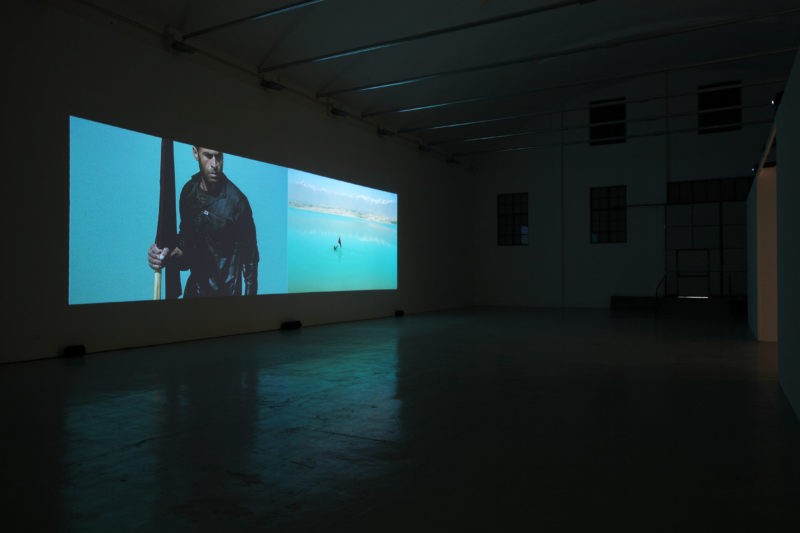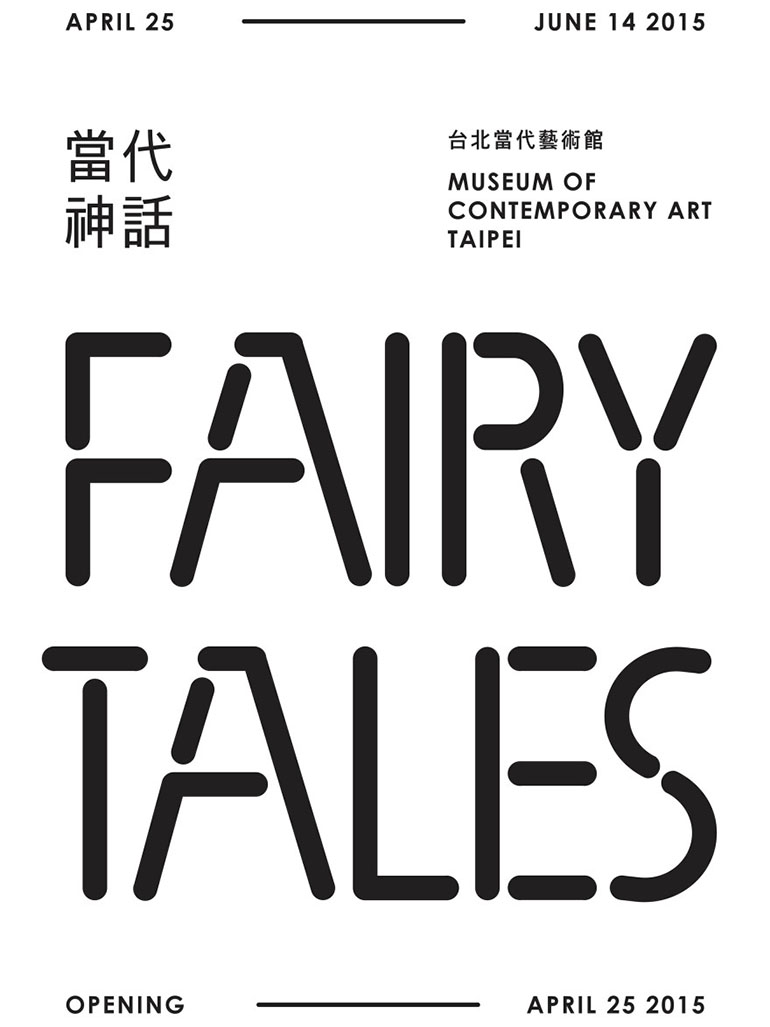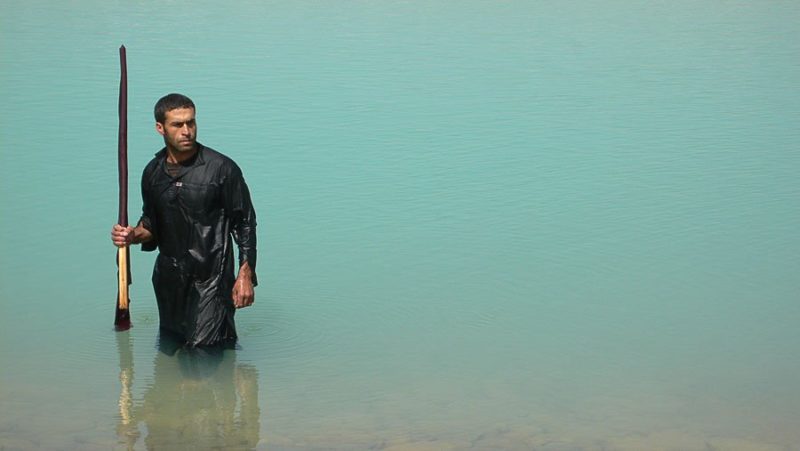
Who is Lida Abdul?
Lida Abdul’s 1 two-channel work entitled What we have overlooked (2011) was first presented at dOCUMENTA 2 (13), Kassel. She is an Afghan video and performance artist born in 1973 in Kabul. Forced to flee Afghanistan following the Russian invasion and the war that followed, Abdul lived as a refugee in Germany and India before settling in the US.
What We Have Overlooked
The video, filmed by a bright blue lake near Kabul, shows a man slipping underwater holding a black flag. She alternates between close-up and distant views, following the actions of the man to whom the subtitles give a voice until he finally vanishes under the surface. It is at the same time elegant, ethereal, beautiful, and strongly defiant.
Video excerpt
Analysis
Lida Abdul examines the relationship between individual and nation, represented by the flag, its abstract symbol. Lida Abdul emphasizes, “Yes, it is about Afghanistan; yes, [my work] deals with politics, but it also deals with form.” She adds that she’s deeply interested in “beautiful images” and aims to “seduce the audience with images.”
Interplay of personal & political
Lida Abdul’s What we have overlooked masterfully intertwines the personal with the political. Rooted in Abdul’s own experiences as an Afghan witnessing the devastations of war, the artwork also delves into the broader political implications of conflict, displacement, and cultural erasure. This interplay offers a deeply intimate yet universally resonant perspective on the effects of war.
Engagement with the landscape
The Afghan landscape, especially its ruins, plays a pivotal role in Abdul’s work. In What we have overlooked, the landscape is not merely a backdrop but an active participant. It stands as a silent witness, its scars and ruins testifying to the traumas and histories it has endured. The landscape’s presence amplifies the narrative, making it more evocative and poignant.

Cultural commentary
Abdul’s artwork offers a profound commentary on the destruction of cultural heritage. Given Afghanistan’s history, especially events like the Taliban’s destruction of the Buddhas of Bamiyan, this piece becomes a powerful statement on the loss of cultural identity and memory. It underscores the importance of preserving history and heritage, even in the face of adversity.
Medium & method
The choice of video art as a medium sets “What we have overlooked” apart. Abdul’s multimedia approach, combining visuals, sounds, and sometimes performances, creates a dynamic and layered narrative. This immersive experience allows viewers to engage with the artwork on multiple levels, making the message more impactful and resonant.
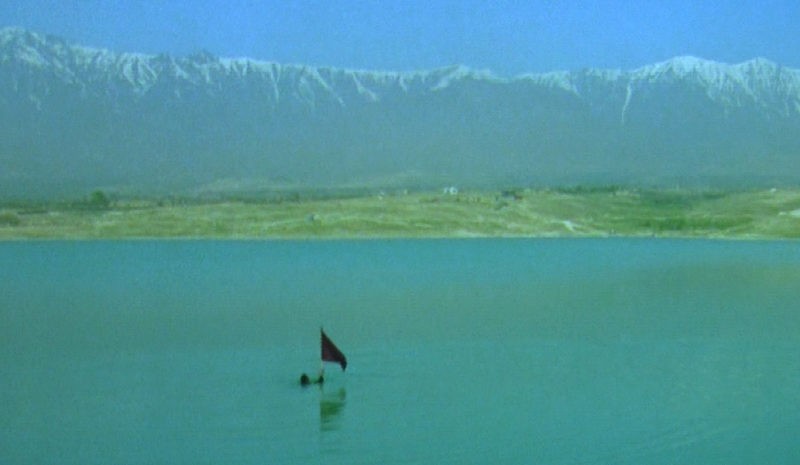
Emphasis on the overlooked
As the title of the artwork suggests, Abdul draws attention to the aspects of war that often remain in the shadows. Beyond the physical devastations, the piece highlights the deep cultural, emotional, and psychological scars left behind. It serves as a reminder of the resilience of people and the stories that often go untold amidst the larger narratives of conflict.
Interplay of Personal and Political
Lida Abdul’s “What we have overlooked” masterfully intertwines the personal with the political. Rooted in Abdul’s own experiences as an Afghan witnessing the devastations of war, the artwork also delves into the broader political implications of conflict, displacement, and cultural erasure. This interplay offers a deeply intimate yet universally resonant perspective on the effects of war.
Engagement with Landscape
The Afghan landscape, especially its ruins, plays a pivotal role in Abdul’s work. In “What we have overlooked,” the landscape is not merely a backdrop but an active participant. It stands as a silent witness, its scars and ruins testifying to the traumas and histories it has endured. The landscape’s presence amplifies the narrative, making it more evocative and poignant.
Cultural Commentary
Abdul’s artwork offers a profound commentary on the destruction of cultural heritage. Given Afghanistan’s history, especially events like the Taliban’s destruction of the Buddhas of Bamiyan, this piece becomes a powerful statement on the loss of cultural identity and memory. It underscores the importance of preserving history and heritage, even in the face of adversity.
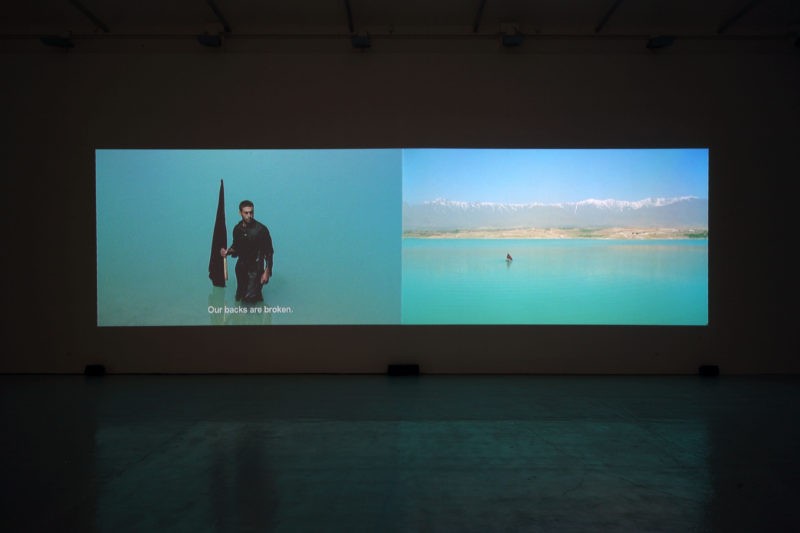
Medium and Method
The choice of video art as a medium sets “What we have overlooked” apart. Abdul’s multimedia approach, combining visuals, sounds, and sometimes performances, creates a dynamic and layered narrative. This immersive experience allows viewers to engage with the artwork on multiple levels, making the message more impactful and resonant.
Emphasis on the Overlooked
As the title of the artwork suggests, Abdul draws attention to the aspects of war that often remain in the shadows. Beyond the physical devastations, the piece highlights the deep cultural, emotional, and psychological scars left behind. It serves as a reminder of the resilience of people and the stories that often go untold amidst the larger narratives of conflict.
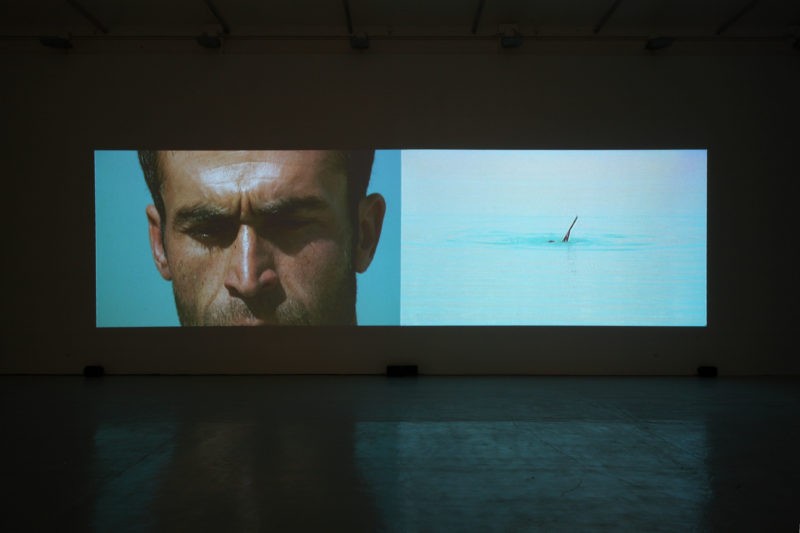
Universal themes
While deeply rooted in the Afghan experience, the themes explored in “What we have overlooked” are universal. The artwork speaks of loss, memory, resilience, and the significance of cultural heritage. These shared human experiences, set against the backdrop of the Afghan landscape, create a bridge, connecting diverse audiences and contexts.
Final words
Lida Abdul’s What we have overlooked is a testament to the power of art to convey complex narratives. Through its engagement with personal experiences, cultural commentary, and universal themes, the artwork offers a profound reflection on the effects of war, the importance of memory, and the resilience of the human spirit. It stands as a poignant reminder of the stories that often remain untold, urging viewers to look beyond the obvious and recognize the deeper implications of conflict and loss.
